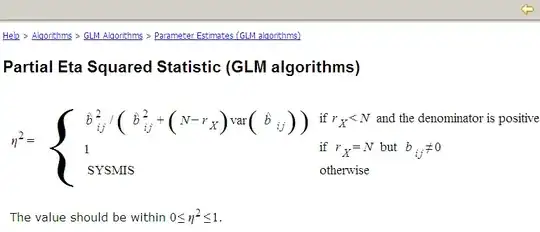I'm trying to compute ANOVA effect sizes from papers that provide an F value without other information. If I understand correctly, the effect size for a single-factor ANOVA is $$ \eta {2} = \frac{ss_{between}}{ss_{between} + ss_{error}} $$
And the F value is: $$ F = \frac{(N-k)ss_{between}}{(k-1)(ss_{between} + ss_{error})} $$ UPDATE: Nope! the denominator is just [(k-1)*SSerror]. Thus, everything that follows is invalid. Back to first-years stats for me.
Where N = number of observations and k = number of groups.
Question 1: Does it follow that you can calculate eta squared as: $$ \eta {2} = \frac{k-1}{N-k}F $$
Question 2: I tried checking this in some output from SPSS. Here's an example with k=4 and N=158:

I'm aware that SPSS gives partial eta squared, but for a single-factor ANOVA that should be the same as eta squared, right? And indeed, the ratio of the sums of squares is $\frac{342.872}{(342.872+6133.519)} = .05294$. But using F, we get $2.870*3/154 = .05591$, which is off by much more than rounding error.
Is SPSS subtly adjusting F somehow, or am I confused about how to calculate eta squared?

